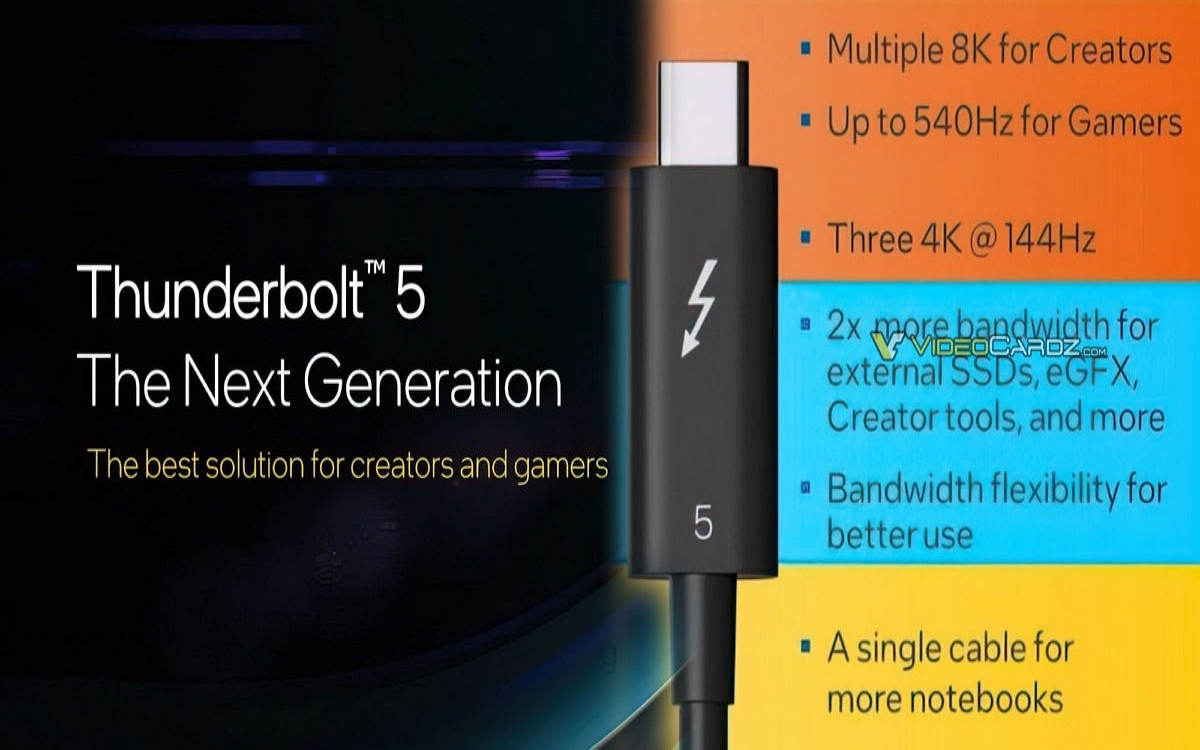That’s it, Intel has finally unveiled the fifth generation of its Thunderbolt connectivity, used in some of the fastest computers in the world, including Apple’s MacBook Pros for several years now.
3 years after launching Thunderbolt 4, Intel has just lifted the veil on a brand new iteration of its standard, Thunderbolt 5. The high-speed interface technology born from the collaboration between Intel and Apple in 2011 is therefore finally entitled to a new iteration, which promises as usual to always push the limits of data transfer and versatility through a single port.
Thunderbolt 4, the previous version, brought impressive improvements such as support for dual 4K monitors or a single 8K display, USB4 compatibility, 100W charging, and a minimum data transfer rate of 32Gbps . However, it shared the same total bandwidth of 40 Gbps with Thunderbolt 3 and retained compatibility with the PCIe Gen3 standard. Thunderbolt 5 promises even more significant changes.
Also read – USB will finally become more understandable, say goodbye to SuperSpeed
What should we remember about Thunderbolt 5 connectivity?
This latest Thunderbolt 5 standard promises to achieve astonishing total bandwidth of up to 120 Gbps, thanks to Bandwidth Boost technology. This is therefore three times more than the previous generation, and 6 times more than USB4.

In its standard configuration, Thunderbolt 5 offers an impressive 80 Gbps two-way connection. However, when demand arises for high resolution displays with increased refresh rates or the need to support multiple displays, devices can exploit the full speed of 120 Gbps. Two 6K displays can be connected simultaneously.
The inclusion of PCIe Gen4 compatibility is particularly interesting, as it promises to unlock greater bandwidth potential for external GPUs, which could address one of the limitations of Thunderbolt 3 and 4.

One of the main features of Thunderbolt 5 is its Compatibility with a range of standards including DisplayPort 2.1, USB v4, USB 3 20G and PCIe Gen4. The standard also provides robust load capacities, since it allows deliver up to 240W on a single cable.
The first Thunderbolt 5-equipped systems are expected to launch in 2024. These could be laptops based on the Meteor Lake architecture, but Apple is also expected to adopt it later in 2024 in its high-end 14- and 16-inch MacBooks, equipped with M3 chips. Pro and M3 Max.
